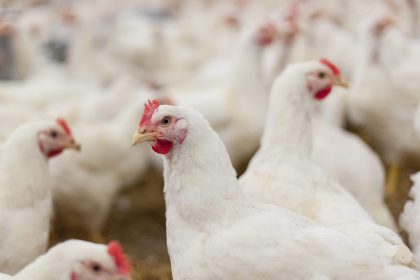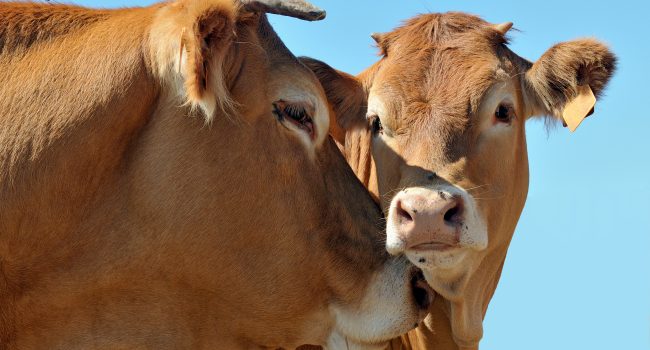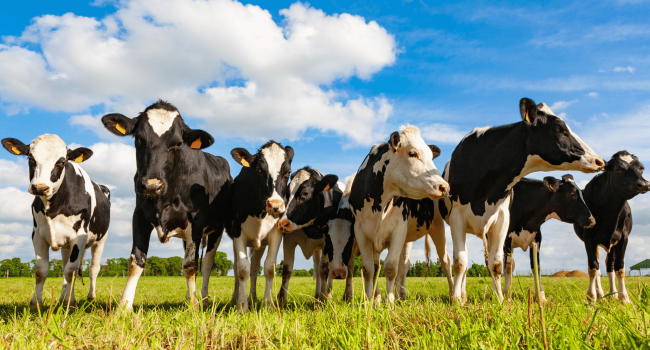Over the last 50 years, broiler body weight has increased over 450%, but the body weight target considered optimal for broiler breeder reproductive efficiency has remained virtually constant. Thus, the gap between growth potential of broilers and broiler breeders target body weight is increasing.
Nutrition and, more precisely, energetical metabolism influences reproduction. That is why one of the biggest practical contemporary challenges facing broiler breeder producers is achieving high flock uniformity considering the females’ body weight to ensure sustainable performances.
Overweight and female reproductive troubles
The effectiveness of selection has led to having fast growth birds while minimizing energy expenditure. This suggests different metabolic management than other lineages such as egg lines. Although the production of an egg is a process that requires a lot of energy, an excess of energy leads to an increase of female body weight and literature demonstrated its negative consequences on egg production.
For immature females, this can lead to accelerated development of the reproductive system at sexual maturity and to ovarian hyperactivity. It may also decrease the production of functional oocytes by causing deregulation of the follicular hierarchy.
It generates an anarchic development of the follicles which can lead to the coexistence of several follicular hierarchies disturbing the ovulation. The greater frequency of multiple ovulations or close ovulation lead in particular, to a greater incidence of abnormal eggs (deformed, soft).
Multiple ovulations cause the appearance of “eggs doubles” (double yellow) whereas close ovulations usually lead to the appearance of a first “normal” egg, the second being then smaller, deformed and presenting defects of calcification.
An explanation comes from a study that investigated the effect of overfeeding on lipoprotein production (main yolk compounds) in the liver. Their model showed an increase of VLDL-like lipid vesicles diameter (lipoproteins family) which normally have the particularity to have an identical size of approximately 30nm. The alteration of their physicochemical properties modifies their blood transport to the follicles under development leading to a stop of yolk deposits in the growing follicles.
Consequently, it is really important to take care of the feeding strategy to fed male and female breeders to ensure the best fertility rate and obtain the highest number of day-old chicks leading to higher economical profitability.
Hen physiology
The formation of the eggs requests a very high level of energy and nutrients. A study evaluated the energy level needed to produce one egg at 102 kcal. It represents one third of the total amount of energy ingested daily by the hen.
These huge energy requirements involve a high energetically and physiological metabolism. The formation of the egg is not just associated only to two different anatomical structures which use an enormous amount of nutrients: the ovary for the yolk and the oviduct for the albumen and the eggshell.
The liver is also a key organ implicated on the hen’s metabolism which needs to be maintained healthy. The liver provides nearly all basic nutrients for the development of the yolk and albumen and supports the development of the eggshell.
A liver remaining healthy allows a good egg production with and excellent eggshell quality. When the liver is suffering, production and egg quality are directly affected.
The source of energy influences the liver function. Energy can come from lipids, proteins, carbohydrates and sugars. The liver will use directly or indirectly these nutrients to build lipoproteins (main compounds of the yolk) which will be transferred from the ovary by the blood.
From a metabolic point of view, the building of lipoprotein from lipids is very easy for the liver. On the other hand, building lipoproteins from an excess of carbohydrates, sugars and proteins is stressful and metabolically costly for the liver.
Unlike other species such as ruminant and pig, birds have a very low capability to biosynthesize de novo triglycerides in adipocytes.
This explains why hens maintain a high blood glucose concentration to cope with the enormous challenge of lipogenesis for egg formation.
So, hens are highly subjected to type 2 diabetes. Thus, diets rich in fat help to keep the liver healthy but are very expensive because of formula cost. However, the diet contains mainly cereals rich in carbohydrates such as cellulose and starch.
That is why a hen needs to synthesize de novo fatty acids in the liver to meet lipid requirements for producing an egg.
Furthermore, there is a di-synchronicity between the feed intake and the moment when the egg is being constructed (continuously over the day) meanings the liver is solicited all over the day.
In case of excess of energy consumption, birds can store it in the liver, via a phenomenon called hepatic steatosis which leads to fatty liver syndrome.
A fatty liver lowers egg production, increases mortality, decreases eggshell quality and alters carbohydrates and fat metabolism affecting reproductive parameters.
The regulation of the lipoprotein metabolism and more generally the production of eggs are under the control of two main hormones: insulin and estrogen.
Type II diabetes.
When insulin is not enough produced or when the body cannot effectively use it, type 2 diabetes is occurring and corresponds to a prolonged elevation of blood sugar named hyperglycemia.
This pathology is derived from carbohydrate metabolism disturbance appearing progressively. Diabetes is promoted by a decrease of sensitivity of cells to insulin (insulin-resistance) especially when overweight is observed.
Insulin production becomes insufficient and leads to an accumulation of glucose in blood which cannot be use anymore by the liver, muscle and fat tissue cells, leading to disturbances at physiologic level as glucose is the main “oil” of the cells.
Hepatic fat accumulation is a complication of diabetes: an increase of fat transport to the liver is observed associated to a decrease of removal of fat from the liver. This explains the fatty liver syndrome occurring at the end of production period.
The late laying phase
The late laying phase is a critical period where a natural decline of the reproductive efficiency of breeders is observed.
These events are often correlated with a fatigue of the hen leading to a disturbance in carbohydrate and fat metabolism and to a difficult management of the female body weight. At this stage, the severity of diabetes increases and is physiologically translated into a decrease of performance (reduction of eggs production, apparition of fatty liver syndrome, hens are heavier and fertility rate is reduced).
To support this specific phase, a solution based on an innovative vegetal active ingredient named PERFEGG has been developed by ADM. It helps producers to maximize their profitability by answering to 5 objectives:
- Limit the body weight gain
- Increase the number of eggs produced
- Improve female fertility
- Improve hatching rate
- Increase the number of day-old chicks
A recent trial run in a French R&D facility on breeders highlighted the benefits of PERFEGG on the significant increase of female fertility (+2.7pts), an improvement of the hatching rate by +2.2 pts. This involved the production of +1 day-old chick per hen after 10 weeks of supplementation.



By reducing Type II diabetes prevalence, PERFEGG improves fat metabolism in the liver and the formation of egg yolk.
More lipoproteins are synthesized in the liver and exported in the ovary tract leading to a better homogeneity of the ovary.
Consequently, the egg production is increased, more day old chick are produced. By a better management of the body weight gain associated to a better fat metabolism, the female fertility is increased. In this trial, PERFEGG significantly limited the body weight gain of the female.
With a potential return on investment higher than 3, PERFEGG is a safe and profitable solution to improve the economic performances of day-old chick producers.




